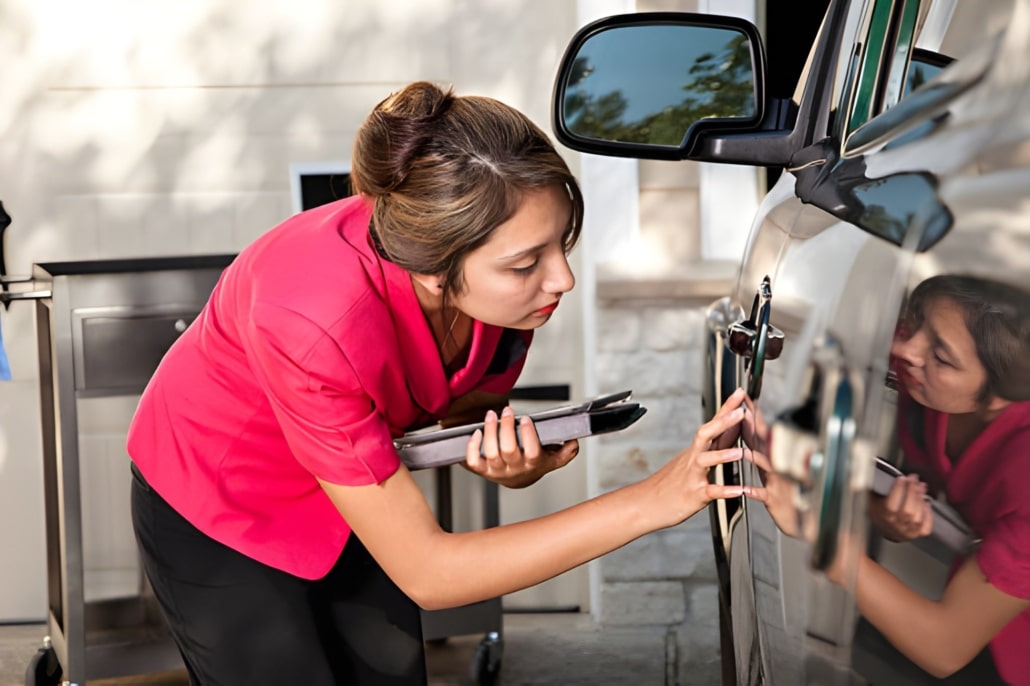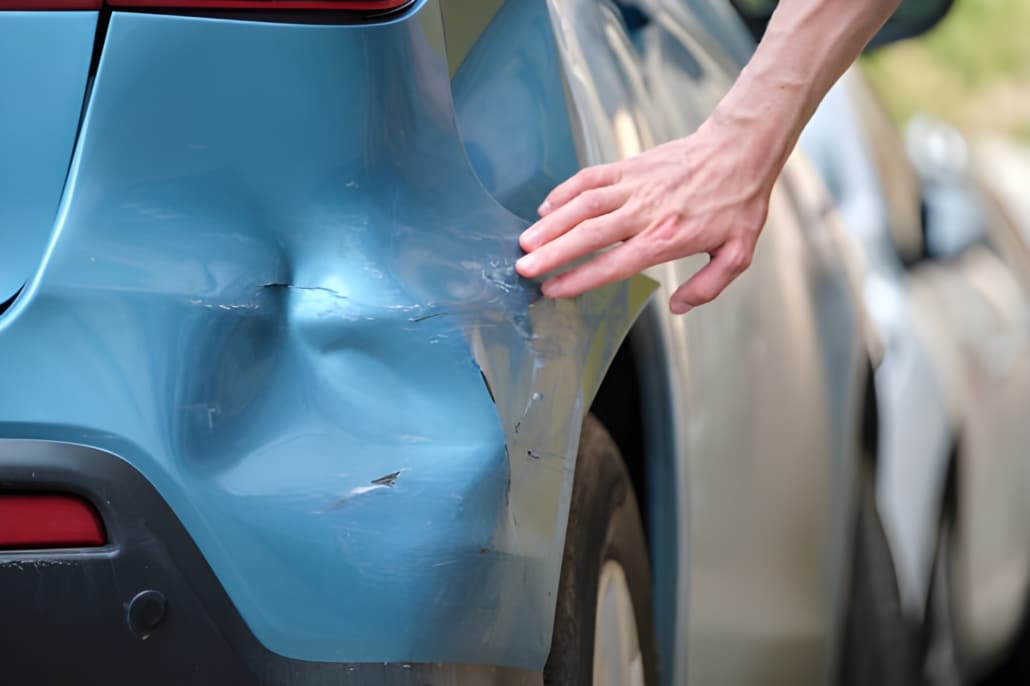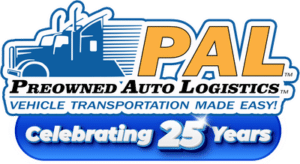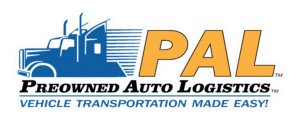What Happens If Your Car Gets Damaged During Transport? A Comprehensive Guide
Transporting your car, whether across town or across the country, is a service that many people now see as the easiest part of relocating. Most customers trust experienced professionals to handle their valuable possessions. They expect their cars to arrive in the same condition they were loaded and understand that any scratches or dents detected upon delivery will be considered the result of poor handling. But, as customers know all too well, road conditions change. The weather is unpredictable. There’s always a chance that something might go wrong on a journey of hundreds, even thousands, of miles.
What happens if a vehicle gets damaged during transport? Although car damage during transport is rare with reputable carriers, being prepared and understanding the right steps to take allows shippers to turn a potentially stressful situation into a manageable one. Knowing customers’ rights, the importance of thorough documentation, and how car shipping insurance works are the best defenses. That knowledge helps shippers navigate vehicle transport issues more confidently and steer toward a swift resolution.
At Preowned Auto Logistics, the team believes in transparency and preparation. They are committed to providing safe, fully insured vehicle transport, and they want customers to feel secure from booking to delivery.
This guide walks readers through every step of the process, ensuring they know exactly what to do to protect their investment.
Common Causes of Car Damage during Shipping
Even the best auto shipping companies cannot guarantee that your car will not arrive with a scratch. But knowing what the most common causes of damage are can prepare you for the realities of how important it is to select the right carrier and get the right insurance.

Road hazards and accidents
One risk is the simple act of driving a multi-car carrier down the highway. A multi-car carrier is just another vehicle on the road and is subject to all the same risks. Broken glass and other debris from the road or blown from other vehicles, potholes, and even traffic accidents can cause damage. And even though every carrier backs its drivers’ skill and training, they cannot control everything that happens on the road.
Improper loading, securing, or handling
This is the human error category. Loading and unloading a dozen or so vehicles onto a carrier is a complicated three-dimensional puzzle. Damage can be done if a driver does not carefully drive the vehicle up the ramp, if the vehicle is too tall, or if another vehicle on the carrier is leaking fluids. But the greatest risk is improper securing. Each vehicle must be chained or strapped to the trailer. If those chains and straps are too loose, too tight, or improperly applied, the vehicle can shift during transport, resulting in dents, scratches, or damage to the suspension.
Weather-related risks
Mother Nature can be a real force. Most auto transports are shipped on open carriers that expose vehicles to the elements. A sudden hailstorm can cause much cosmetic damage in a matter of minutes. Heavy rain, snow, or high winds can blow dust and debris onto a vehicle’s finish. While it is true that these “acts of God” are sometimes unavoidable, the carrier’s insurance policy usually covers them.
Step 1: Your First Line of Defense is a Thorough Pre-Pickup Inspection
The most crucial step in the car shipping process occurs before your vehicle even leaves your hands. A thorough pre-transport inspection creates an indisputable, timestamped record of your car’s condition. This record serves as the baseline against which you compare your vehicle’s state at delivery. Without it, proving that damage occurred during transit becomes nearly impossible.
Documenting your car’s condition is essential, so wash your car thoroughly before the carrier arrives. A clean surface reveals every existing scratch, chip, and ding, allowing you to become a detective.
Take detailed photographs using a high-resolution camera or modern smartphone.
Capture images of every panel of your car from multiple angles: front, back, driver’s side, passenger’s side, and the roof. Then, get closer. Take detailed close-ups of any pre-existing damage, no matter how minor. This includes small paint chips, scuffs on the bumper, curb rash on the wheels, and tiny door dings. The more detailed your photos, the stronger your evidence. Ensure your photos have a timestamp or take a picture of the day’s newspaper to prove the date.
Recording a walk-around video provides powerful evidence.
Taking a walk-around video provides strong evidence, too. A continuous video where you walk around the entire vehicle, narrating what you see, is your best friend. Open the doors. Show the inside of the vehicle. Zoom in on any pre-existing flaw. Start the video with the vehicle’s VIN and odometer to prove the identity and condition of the car at that moment.
Before the vehicle leaves, check mechanical functions.
Start the car. Check for any lights illuminated on the dashboard. Work the windows, radio, and air conditioning. While the carrier is most likely responsible for exterior cosmetic damage to a vehicle, it is always good to have a record of the functioning condition of the vehicle.
The bill of lading is the most important document.
The driver will perform their own vehicle inspection upon arrival. They will walk around the vehicle with you, checking for pre-existing damage to your vehicle. The driver will note any pre-existing damage on the Bill of Lading (BOL). The BOL is both a receipt for your vehicle and an inspection report showing the vehicle’s condition at the moment of pickup.
- Check the driver’s notes: Before signing the BOL, carefully review the driver’s inspection report. Make sure it accurately reflects the condition of your vehicle. For example, if the driver notes a “scratch” on the driver’s door and you know it is only a scuff that can be buffed out, speak up. This is your final opportunity to have the inspection report corrected if it is incorrect.
- Sign and keep your copy: Once you are satisfied with the inspection report, sign the Bill of Lading. The driver will also sign the inspection report, making it a legally binding document reflecting your vehicle’s condition at the moment of pickup.
Step 2: Understanding Vehicle Shipping Insurance
Vehicle transport insurance is simple; Just know who covers what. Knowledge is power when it comes to vehicle transport insurance. Knowing what’s covered, or not, will help protect and give you peace of mind when shipping your car.
Carrier liability insurance is mandatory.
Every auto transport carrier that is licensed and bonded must have liability and cargo insurance, per federal law. This insurance coverage is specifically for damage to your vehicle while it’s being driven. But what are its limits?
- What it covers: This coverage protects against damage caused while the vehicle is being transported, caused by driver error, negligence, or defective parts.
- What it doesn’t cover: Coverage does not include items left inside the car (hence why every company, including Preowned Auto Logistics, requires their removal), pre-existing damage as noted on the Bill of Lading, or otherwise non-physical damage issues like a mechanical failure that is not due to the driver or the carrier vehicle (like a dead battery).
The carrier’s insurance is primary coverage in the event of a claim. Still, it may be worth your while to contact your coverage agent to confirm whether your comprehensive policy covers damage when your vehicle is shipped by a third party. You will ultimately claim the transport company, so you may never have to use that coverage. Still, some folks appreciate having that extra assurance.
Verify the coverage limits.
Verify that the cargo insurance limit is adequate for your vehicle value. A typical policy covers $250,000 per truckload, which is sufficient for most vehicles; however, if you are shipping high-value, classic, or exotic cars, make sure the coverage is adequate or consider enclosed transport, which generally has higher limits.
Working with a trusted company like Preowned Auto Logistics makes it easy. Every carrier in our network is vetted to ensure he has full licensing and strong insurance coverage that meets Preowned Auto Logistics damage standards.
Step 3: Damage Occurs: Your Immediate Action Plan
The truck arrives, and you see your car for the first time in days or weeks. Your actions now will determine the outcome of any potential shipping claim.

Inspect before you sign
Don’t just accept the keys and rush to sign paperwork. The driver is expecting you to perform a post-trip inspection. Use your pre-shipment photos and your copy of the original Bill of Lading and do a full walk-around.
- Compare and contrast: Go over every square inch of the car, and compare it to the notes and diagrams on the original BoL.
- Look everywhere: Look at the roof, look under the bumpers, look at the wheels. Look at the car in good light. If it arrives at night, grab a powerful flashlight. If the car is dirty, ask the driver if you can note that the car is “too dirty to inspect” – or perform the inspection as well as you can.
Document the new damage immediately.
If you do find new damage and that damage was not noted on the BoL at pickup, you have to document it right away, before the driver pulls away.
- Take clear photos and videos: Don’t rely on video alone – take many photos too. Get the new damage from different angles and distances. Put a coin or your finger next to the damage to help with the size reference. If you can, get these photos with the transport truck in the background to connect the damage to the delivery event.
- Note the damage on the bill of lading: No exceptions. Before you sign the delivery receipt (many times, it’s the same document as the BoL), write a clear and complete description of the new damage in the appropriate area. For example: “4-inch scratch on passenger door”, or “circular dent on hood, center”
- Have the driver acknowledge it: Show the damage to the driver, and get them to sign the BoL after you’ve noted the new damage. If you sign the Bill of Lading without noting any new damage, you are legally saying that the car was delivered in satisfactory condition. This makes filing a claim almost impossible
Pay the driver and initiate communication
You must still pay the driver for the transport service. Withholding payment can complicate your claim and may even violate your shipping agreement. The shipping fee and the damage claim are two separate issues.
After the driver leaves, contact the auto transport company immediately to inform them of the situation and state your intention to file a formal claim.
Step 4: Navigating the Auto Transport Claims Process
After documenting the damage and notifying the company, you start the formal auto transport claims process. Although each company has a slightly different procedure, the core components are universal. Staying organized and communicative is essential for a smooth experience.
The transport company will either provide you with an instruction guide or a claim form. You’ll need to submit this, along with your supporting documentation.
Essential supporting documentation includes:
- A copy of the original Bill of Lading from pickup, showing the initial condition.
- A copy of the final Bill of Lading from delivery, with the new damage clearly noted and signed by both you and the driver.
- Your pre-shipment and post-delivery photos and videos.
- At least two (sometimes three) written estimates for the repair work from reputable, licensed body shops. Do not arrange for repairs yet; you must wait for claim approval.
- A clear, written statement describing the damage.
Typical timelines and what to expect
Patience is crucial during the claims process, as the carrier’s insurance company requires time to review the evidence, assess liability, and give approval for the repairs.
- Initial Review: Receipt of your documents may take a few days to a week for the claims department to acknowledge and assign an adjuster.
- Investigation: The adjuster will assess the BoL, photos, and estimates, and may also contact the driver for a statement. This investigative phase can last several weeks.
- Settlement Offer: Following the investigation’s completion and claim approval, the insurance company will issue a settlement, typically in the form of a check made out either to you or directly to the body shop for the amount of the lowest reasonable estimate.
Common outcomes of a damage claim
- Full repair coverage: In straightforward cases where the evidence is clear, the carrier’s insurance covers the entire repair cost based on the approved estimate.
- Reimbursement: You might be authorized to have the vehicle repaired and then submit the final invoice for reimbursement.
- Deductibles: Note that the carrier’s insurance policy may include a deductible. The transport company may cover this cost, or it might fall to you. Clarifying this point early in the process is critical.
Throughout the process, maintain professional and regular communication with the claims department, keeping a record of every call and email for your files.
Step 5: How to Prevent Damage During Future Transports
The best way to handle a damage claim is to avoid having one in the first place. Being proactive significantly increases the safety and security of your vehicle during any future cross-country vehicle transport.
Choose an experienced, reputable auto transport provider
Your choice of shipping partner is the most significant factor in door-to-door car shipping safety.
- Look for experience and positive reviews: Seek out companies with a long history of safe deliveries and overwhelmingly positive customer feedback.
- Verify licensing and insurance: Only work with companies that are fully licensed by the Federal Motor Carrier Safety Administration (FMCSA) and are transparent about their insurance coverage.
- Avoid “too good to be true” pricing: Extremely low quotes are often a red flag. They may indicate an unlicensed operator, inadequate insurance, or a company that cuts corners on equipment maintenance and driver quality. A fair price reflects professional service and comprehensive car shipping protection.)
Properly prepare your vehicle for shipping
A well-prepared vehicle is a safer vehicle.
- Remove all personal items: As mentioned, these are not insured. Loose items can also shift and cause damage to your interior.
- Secure loose parts: Retract or remove antennas. Fold in your mirrors. Ensure any custom ground effects or spoilers are secure. If you have a convertible, make sure the top is properly closed and sealed to prevent weather damage.
Choose the Right Transport Type for Your Needs
- Open transport: This is the most common and cost-effective method. Your vehicle travels on an open-air carrier, similar to those you see delivering new cars to dealerships. It is a very safe option for most standard vehicles.
- Enclosed transport: For classic, luxury, exotic, or high-value vehicles, enclosed transport offers the ultimate protection. Your car is shipped inside a fully covered trailer, shielding it from all weather, road debris, and potential hazards. This service comes at a premium price but provides maximum security and peace of mind.
Conclusion: Peace of Mind During Auto Transport
Transporting your car can be stress-free. Although damage may happen, the chances are low. You can reduce worry with preparation. Inspect your vehicle before pick up, learn the basics of shipping insurance, and know what to do when it arrives. Documentation, especially a detailed Bill of Lading, is essential, as is calm communication with your transport provider.
When choosing a trusted company like Preowned Auto Logistics, you can feel secure in your decision. The company’s reputation is built on reliability, open communication, and safety. Carriers are vetted; insurance is verified; logistics are managed; all to allow you to focus on your move.
Ready to ship your car with confidence? Contact Preowned Auto Logistics today for a free, no-obligation quote and experience the peace of mind that comes with a protected, reliable, and professional car shipping service.




